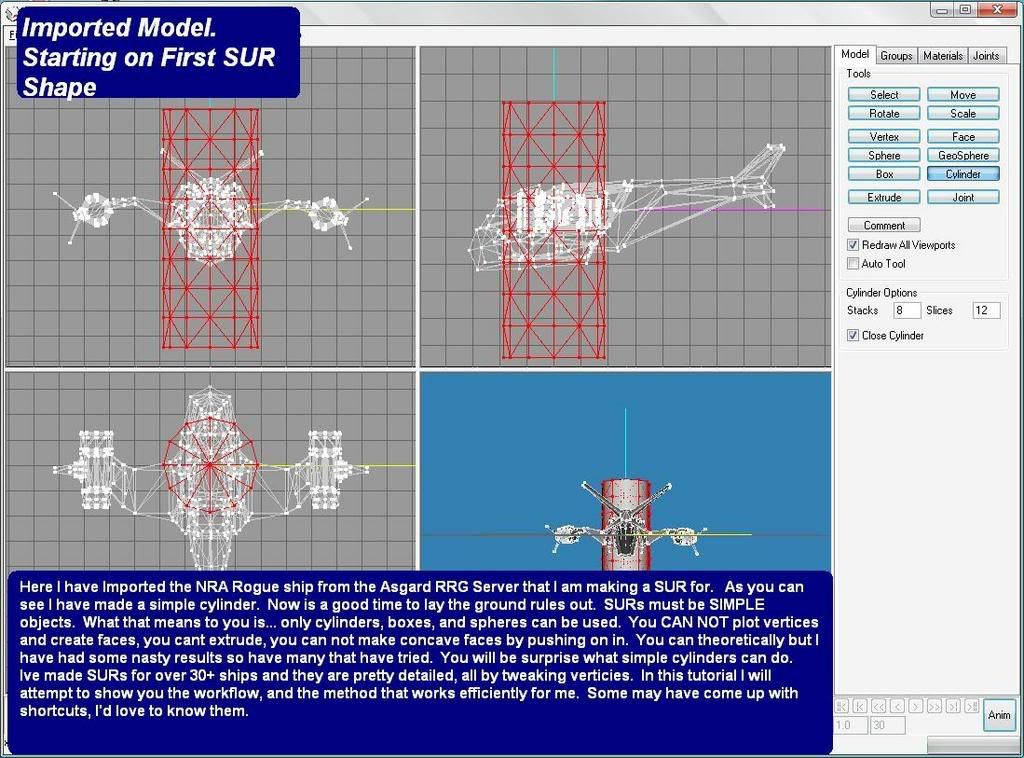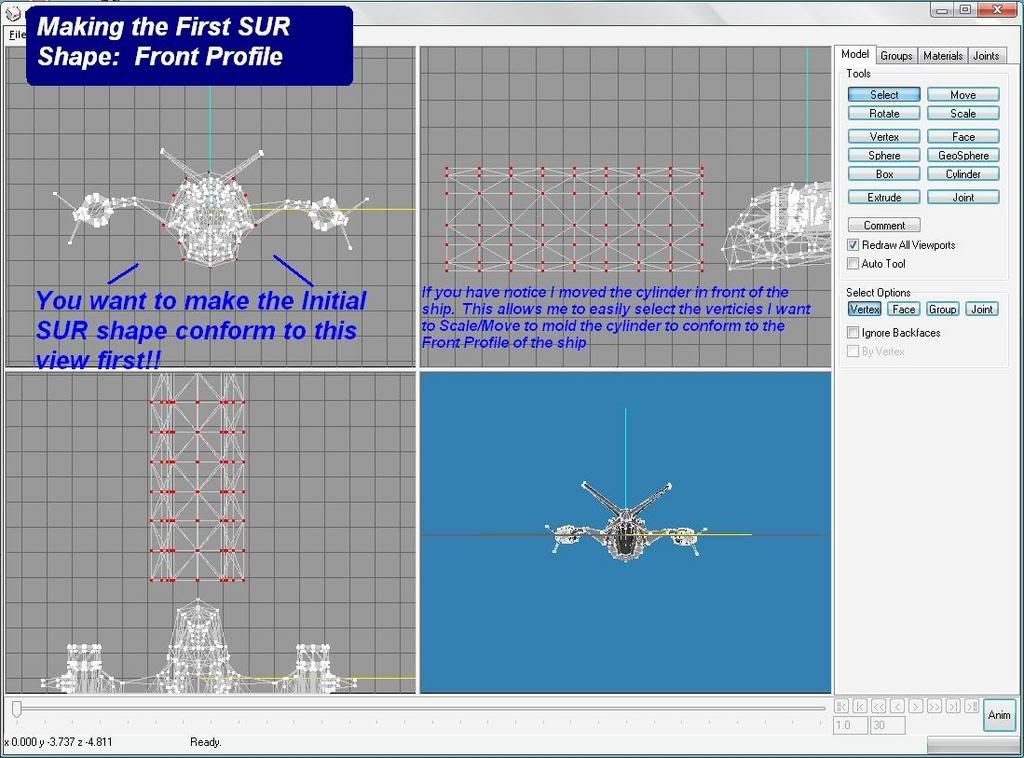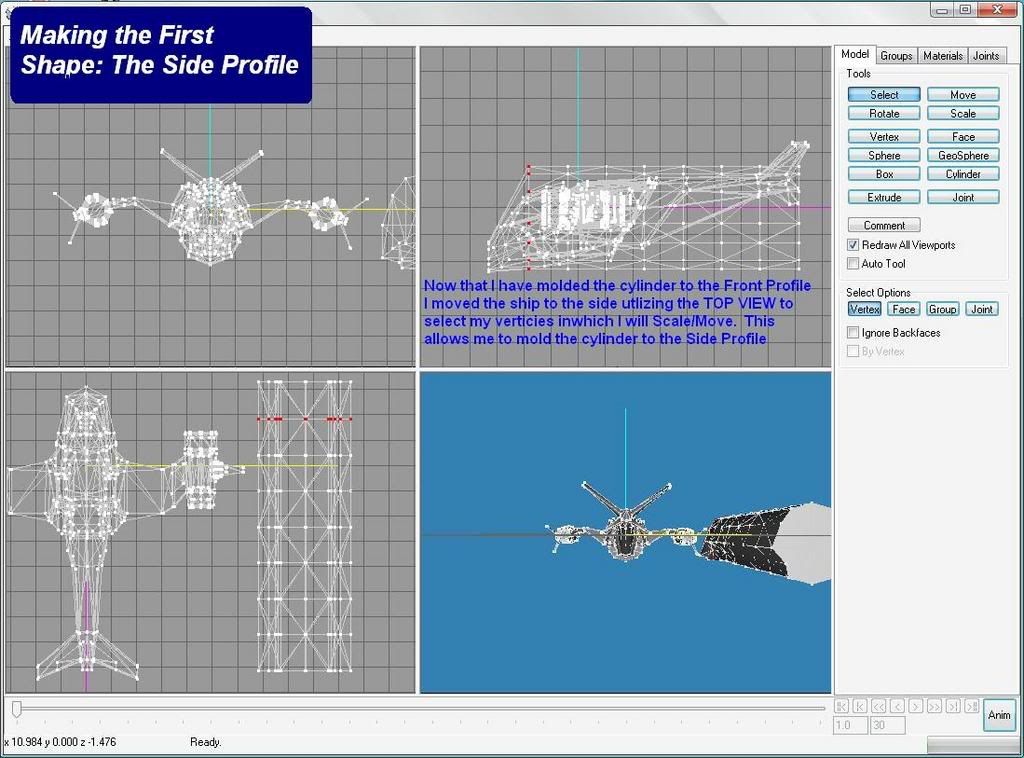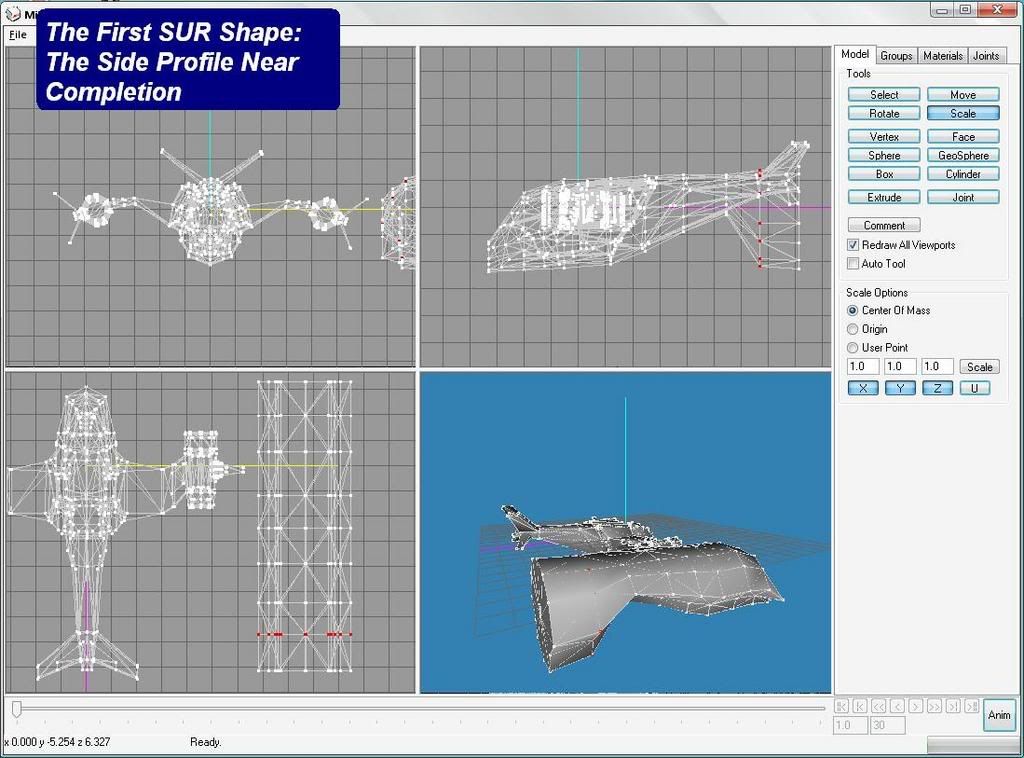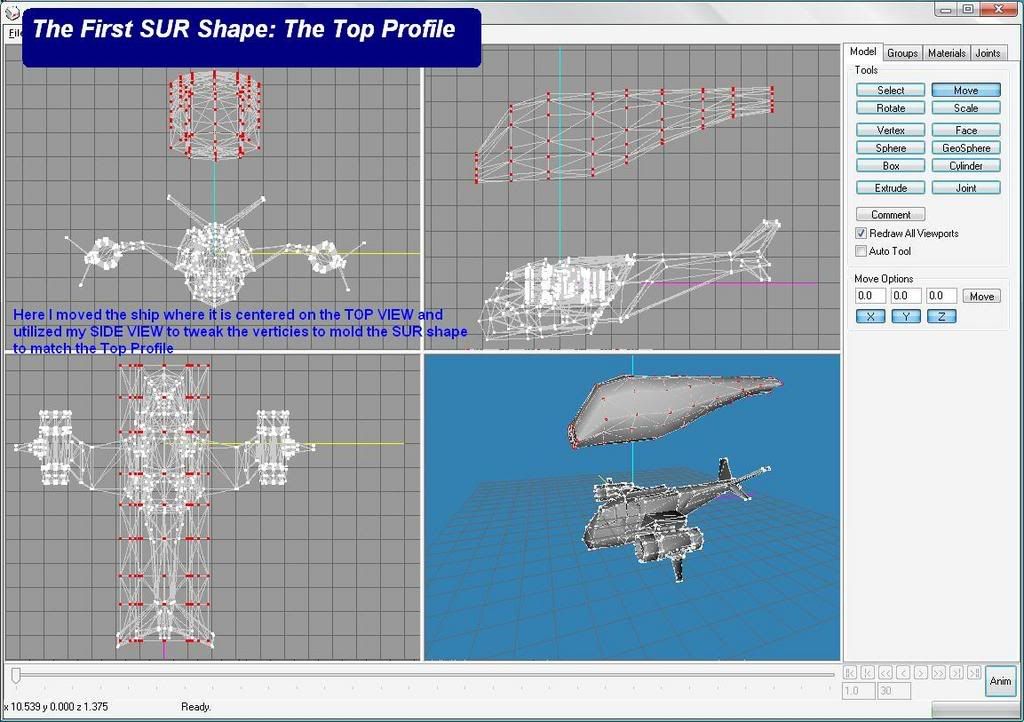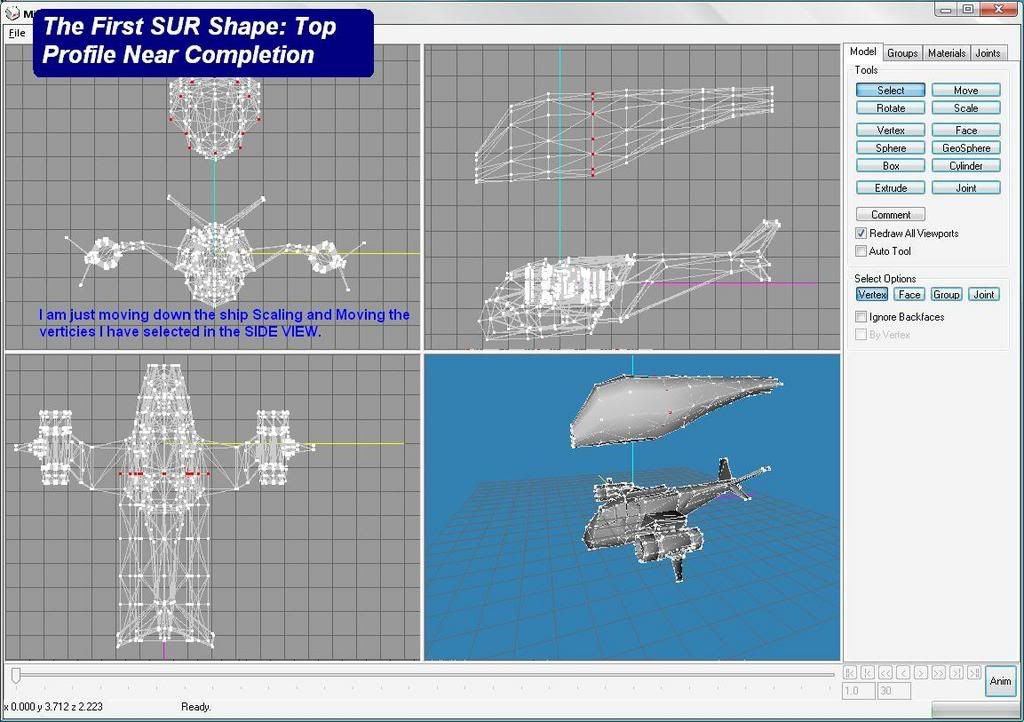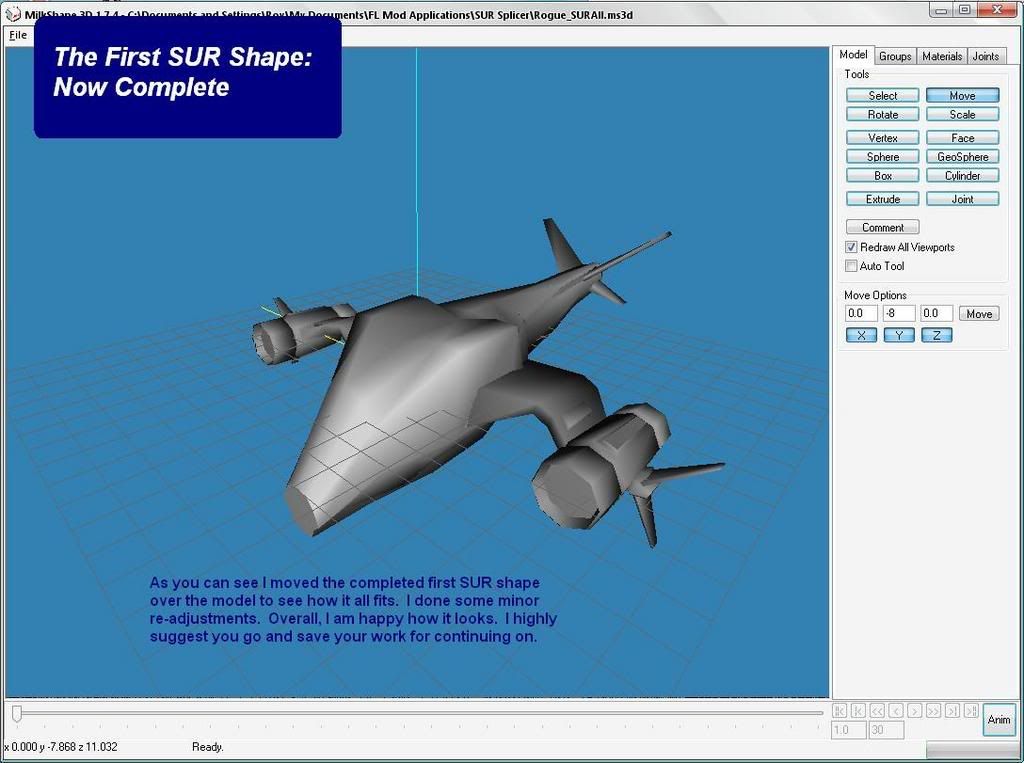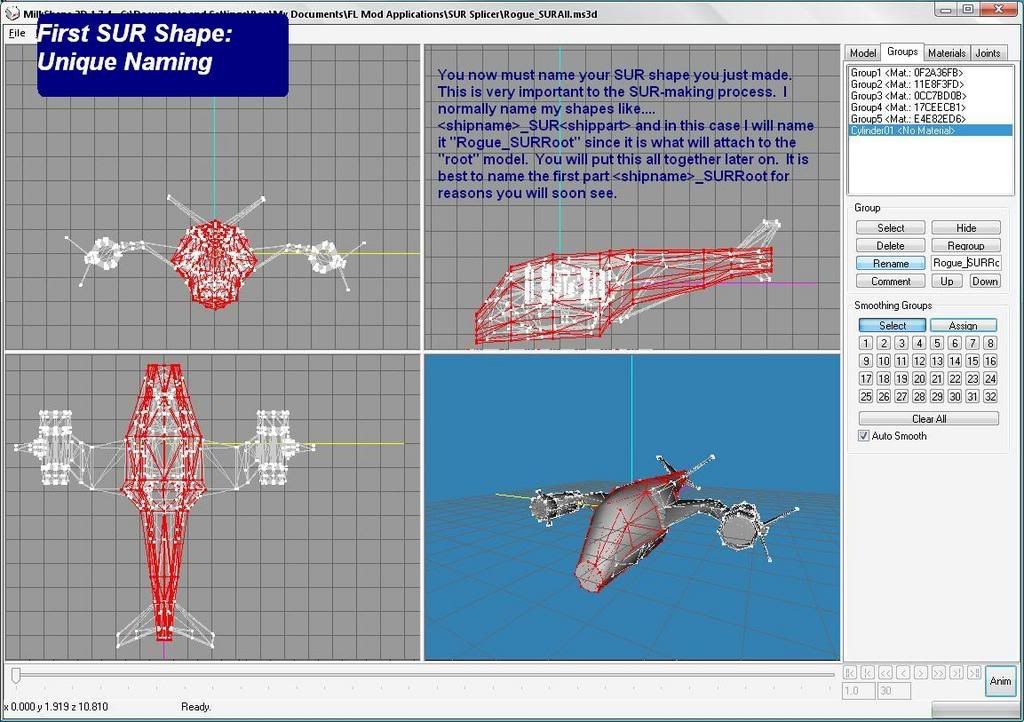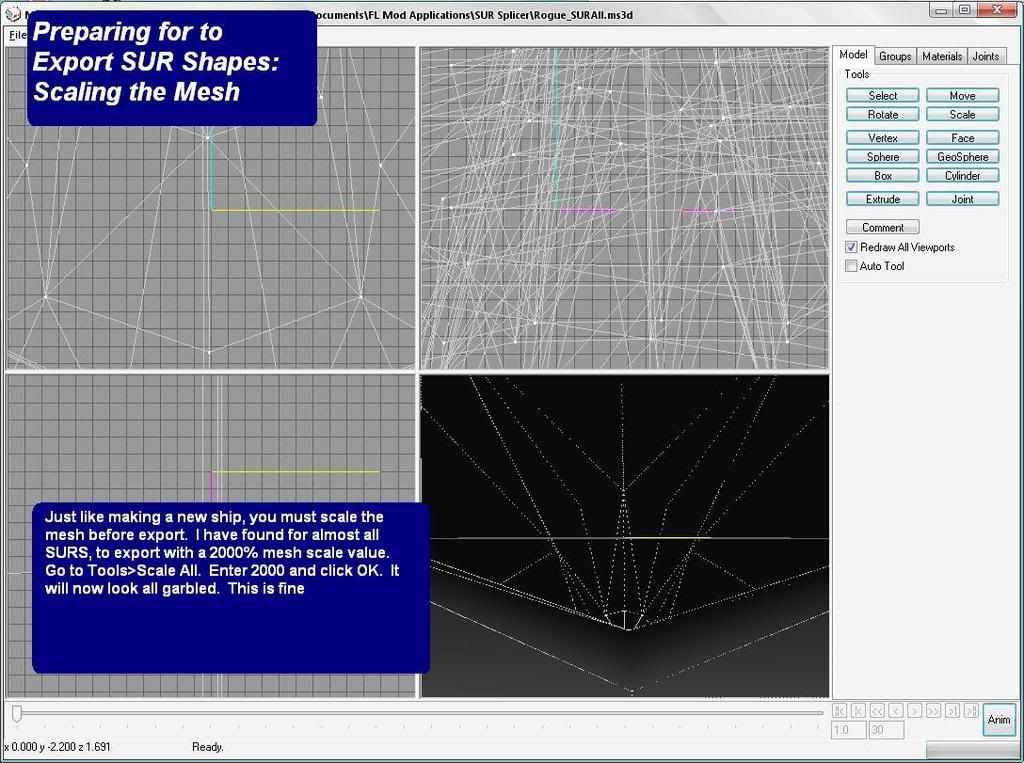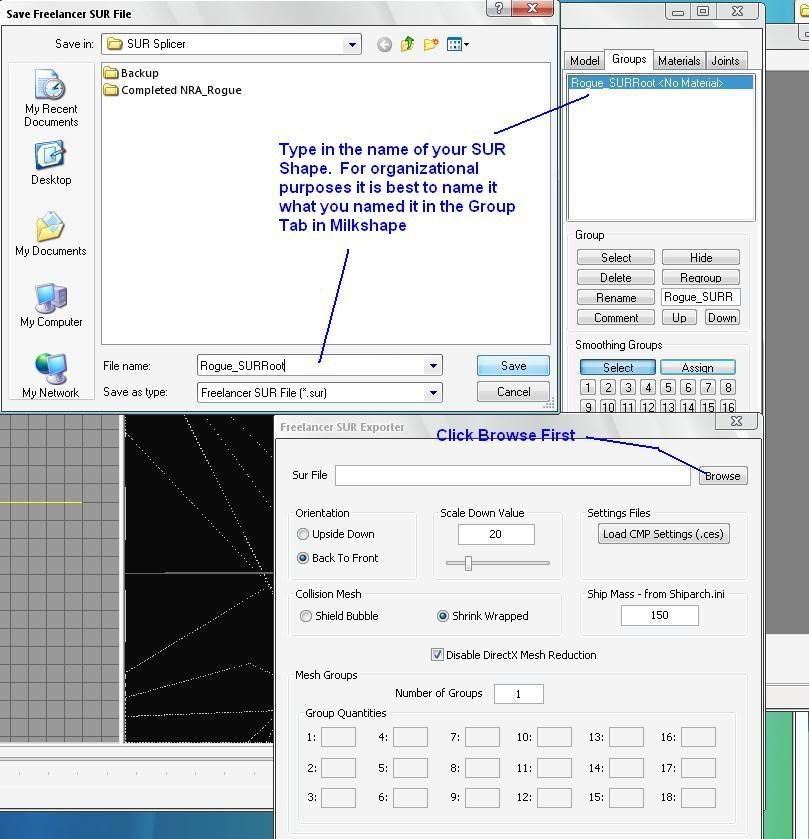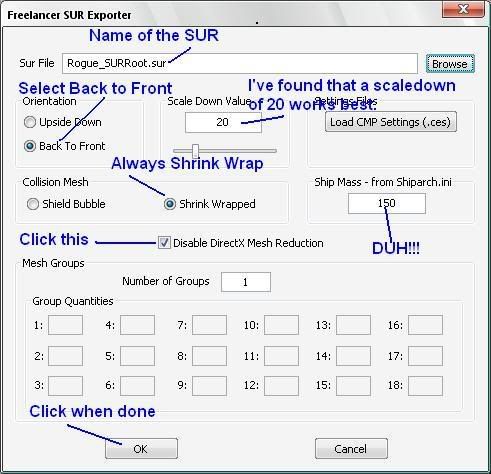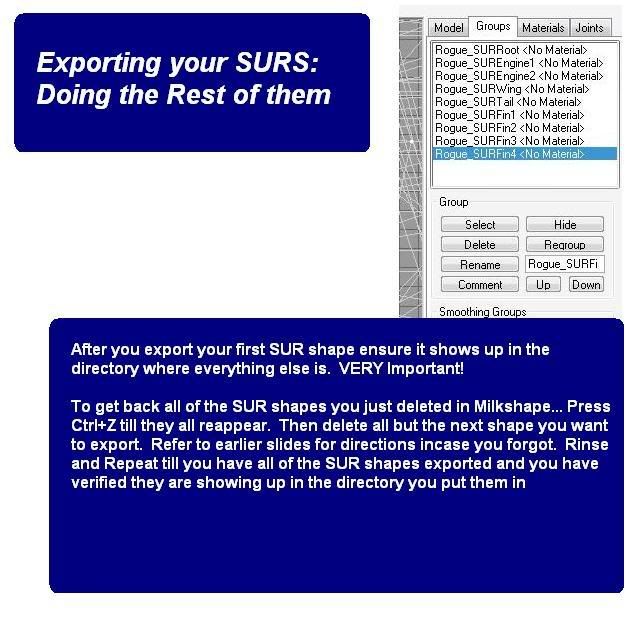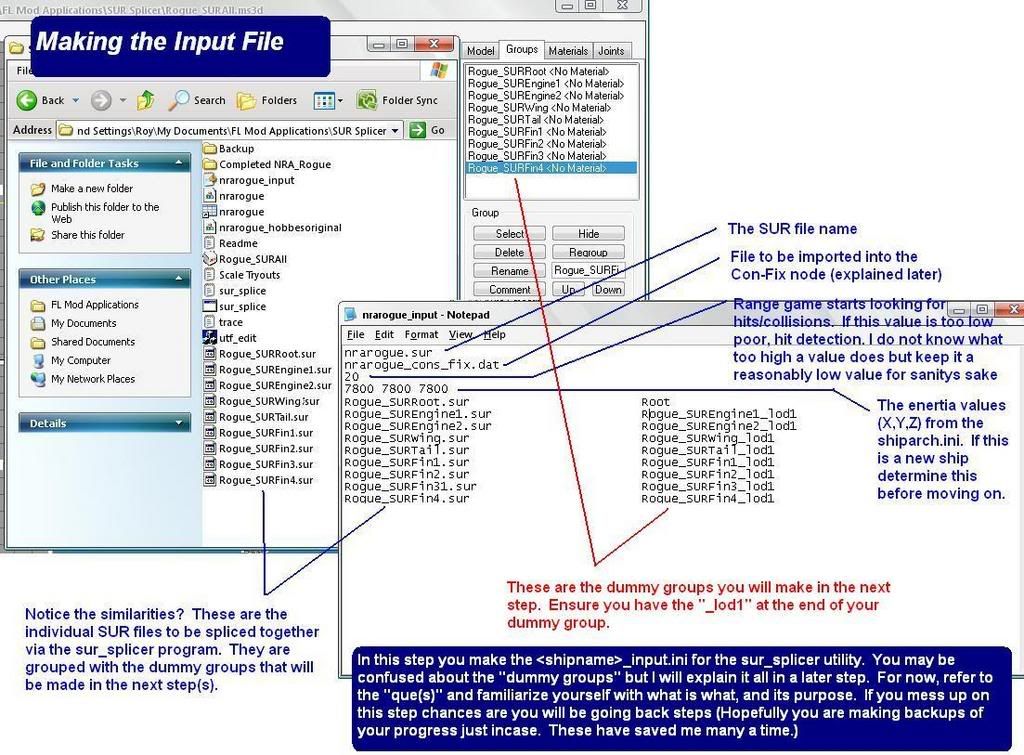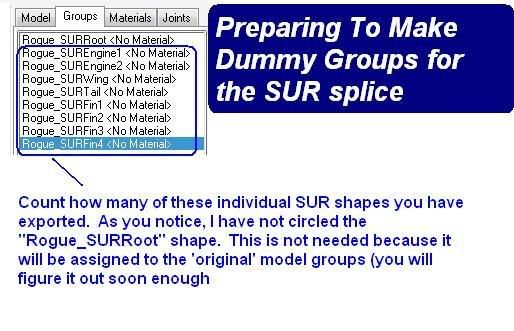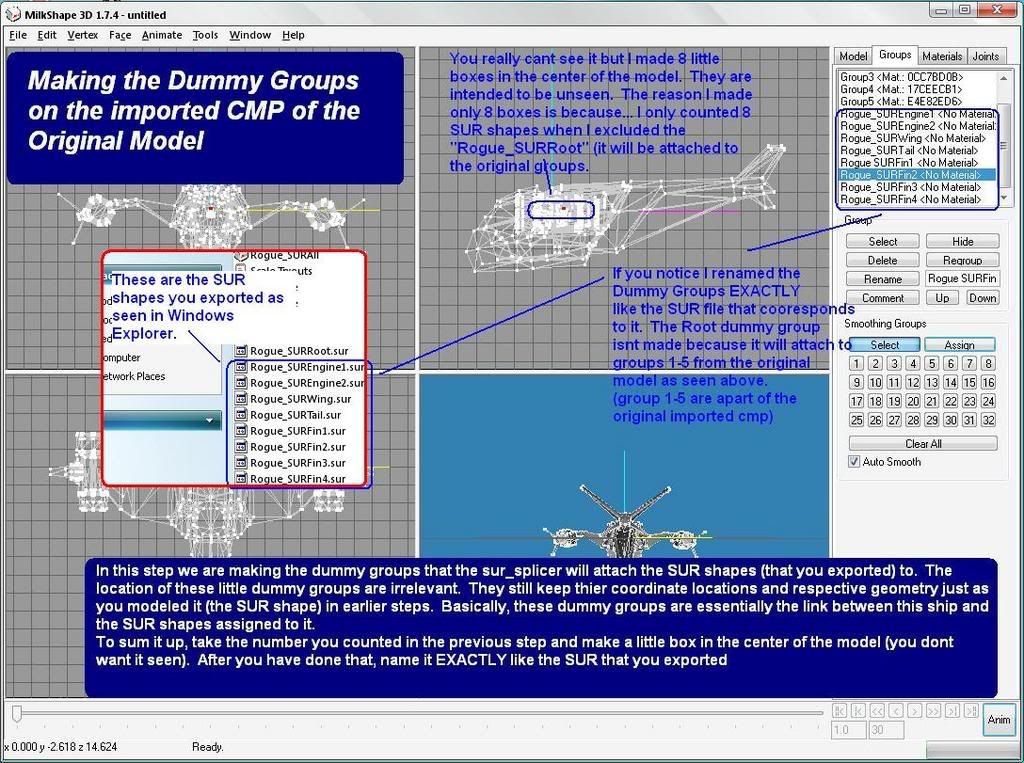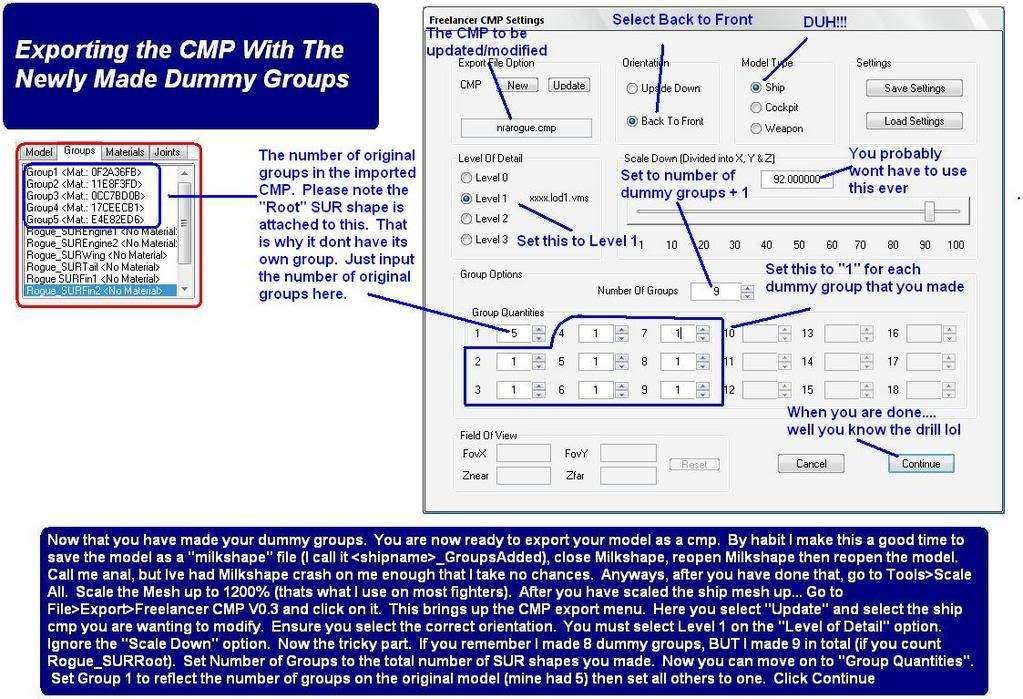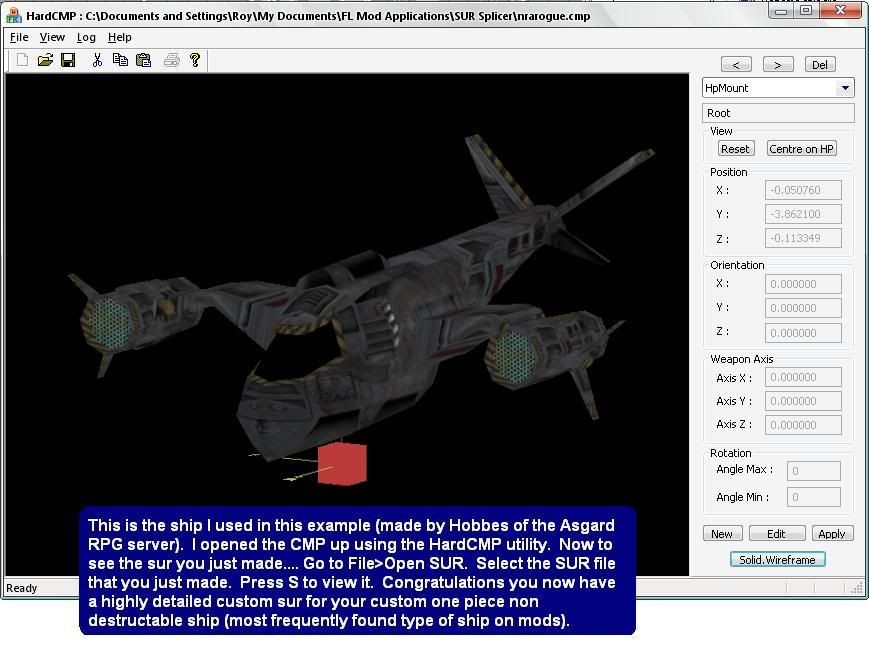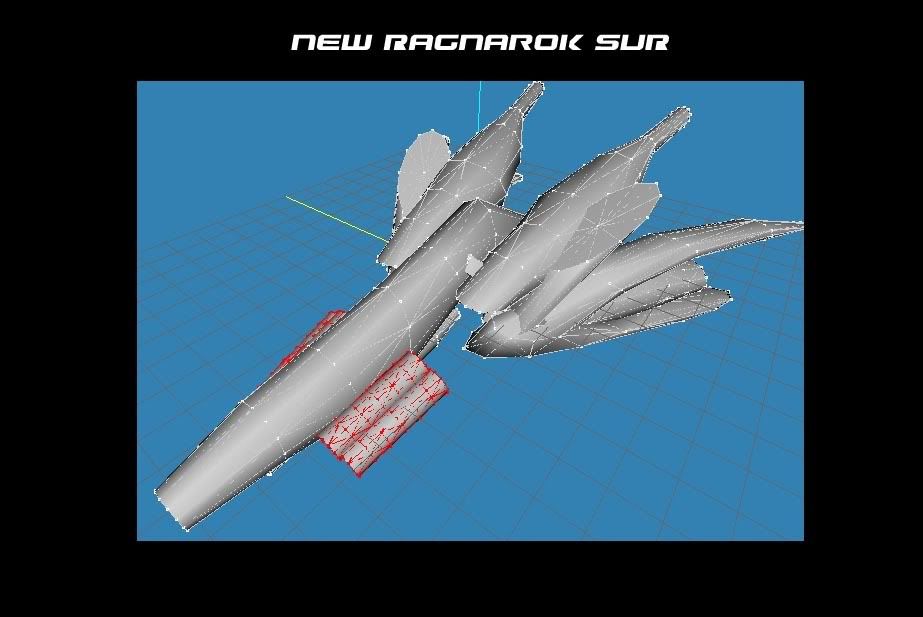First off, thanks for making a step-by-step tutorial on the modeling side! I ignored that in the
tutorial I just wrote yesterday, because if you don't know how to model, you're never going to get anywhere with making a ship, let alone a SUR, but meh.
However, I have some concerns about this tutorial. For example, I see you making SURs with
concave surfaces. In my experience, those will either not register hits, or will cause FL to hard-lock when you bump into them. Are they actually working for you? If you say, "yes", then I would like to test that SUR you showed in your demo, because that would mean that concavity is not a problem, and we can just do single-mesh SURs, even for giant capships with docking bays, etc. However, I do not actually think that SUR you're showing will work right.
Since I got going on this, after all this time, I've sat down and knocked out all the SURs for the major non-FL ships in Toolkit 1.3. I haven't (yet) built unitary SURs for the other ships that need them, like the Train, etc., so that they can have shields and stuff and work perfectly, but it's OK, I've mainly been verifying that my techniques work properly.
To make a concave surface in a SUR, so far as I know, from all of my testing, you need to break it up into convex parts. Check out the wing for the Treefrog, which I just got done testing (and it works 100% perfectly):
In this shot, we can see my Treefrog SUR. It looks like the wings are one piece- and a concave object!

However, this isn't true. I actually used
two pieces for the wings, and both of them are CONVEX.

Also, you're using
far too many polygons, because you're using MS3D's default shapes. High-poly SURs are massively inefficient, and will cause lag, especially if they're ships which may come in large packs. Gotta keep the polycount as low as you can.
Lastly, I see all this stuff about using Dev's Sur Splicer Utility, and UTFEdit. You don't need to do
either step, if you just want a SUR that acts like one piece, and does not have any breakable parts. Just follow the directions I posted, it's much easier

Also, if you follow
my directions, you have a dummy CMP to use to set up the intial scaling/ centerpoint, if your final CMP is weird and has an offset center or other issues.
I guess what I'm trying to say here is that my method's a lot easier, and you're doing a lot of extra work in your example-
my method takes about 20 minutes,
including modeling time, per model, once you know what you're doing! And you never, ever, have to mess with a command-line tool or use UTFEdit

Plus you don't mention the very important steps of stripping the normal data from the meshes, or squashing the mesh you're going to export as a SUR, so that it all fits within a sphere, so that no part of the SUR, when exported, will be outside the SUR shield sphere. This is a really important step, and if you're going to do a modeling guide, don't skip it, or people will be making SURs with wings that don't register hits, long skinny SURs that don't actually work, etc. Believe me, if it's in the guide I wrote, it's there for a reason.
Edited by - Argh on 4/17/2007 10:14:46 PM



